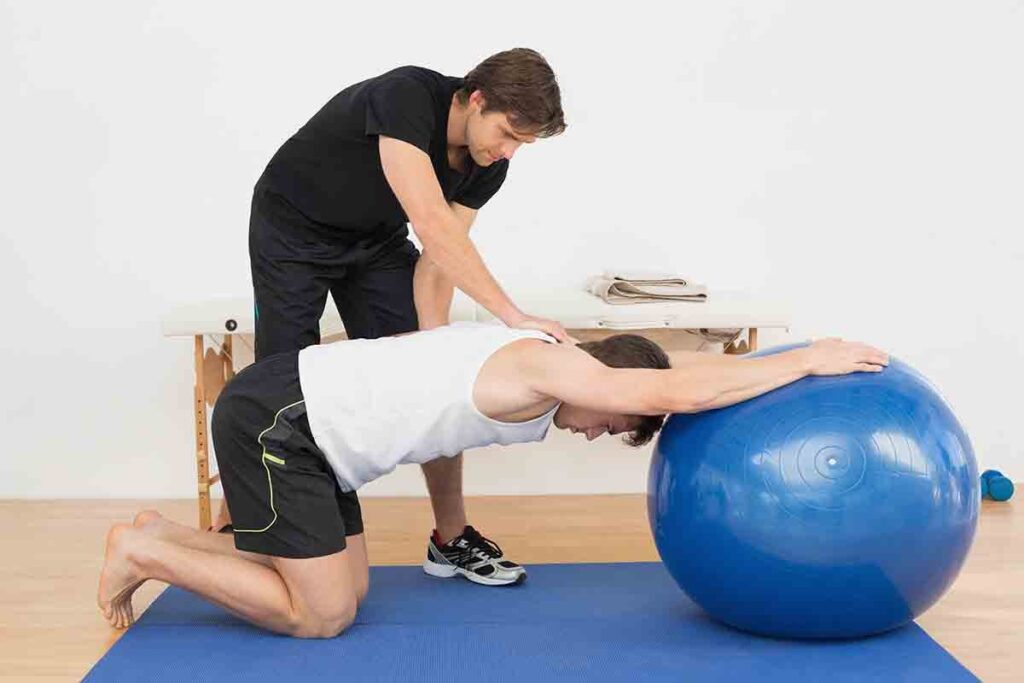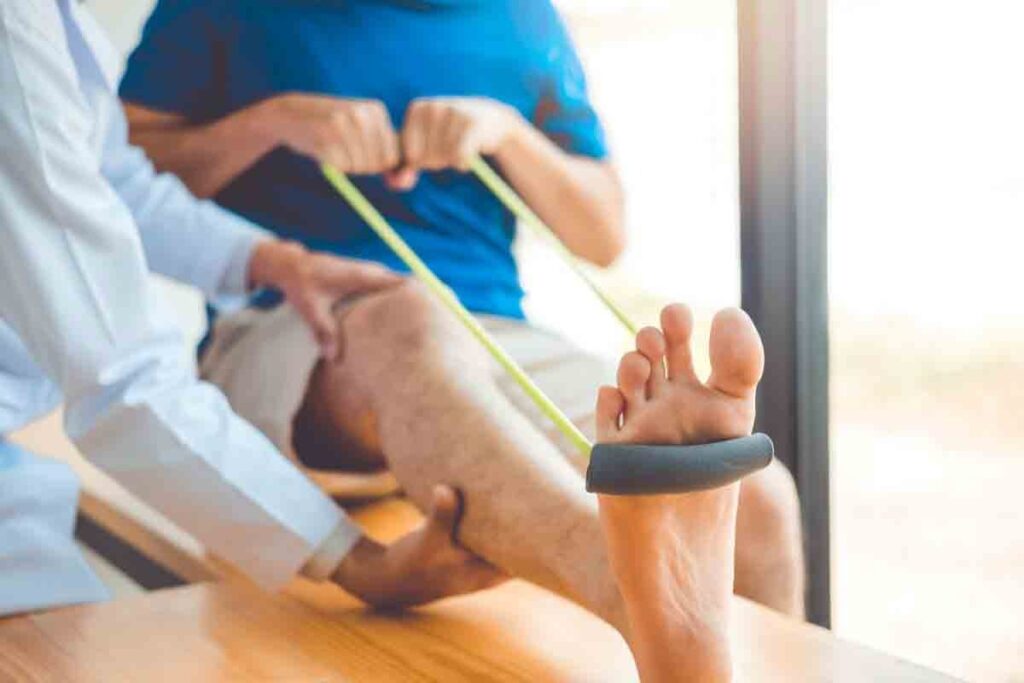
Recovering from abdominal surgery needs careful attention to your body’s healing. Gentle exercises are key, helping you move better and avoiding problems. Studies show that starting with light movements soon after surgery can greatly help.Get 7 essential post abdominal surgery exercises for a safe recovery. Our guide helps you rebuild strength without risking injury.
As you get better, adding core exercises can build your abdominal strength back. At Liv Hospital, they focus on your needs for a safe recovery. It’s important to start moving early and slowly increase the intensity to recover well.

Moving early after abdominal surgery is key to a smooth recovery. It helps avoid complications and improves health. It’s important for patients to know the benefits and how to safely move after surgery.
Exercise is essential after surgeries like hernia repair. It boosts blood flow, lowers clot risk, and improves lung health. Starting with simple activities like ankle pumps and deep breathing exercises can aid in healing.
Studies show early movement after surgery is beneficial. Patients who move early face fewer issues, stay in the hospital less, and recover better. Here are some key findings:
| Study | Sample Size | Key Findings |
| Smith et al., 2020 | 200 patients | Early mobilization reduced hospital stay by an average of 2 days |
| Johnson et al., 2019 | 150 patients | Patients who mobilized early had fewer post-operative complications |
| Williams et al., 2018 | 300 patients | Early movement was associated with improved patient-reported outcomes |
It’s vital for patients to have clear recovery expectations. Knowing that recovery takes time and exercise is important helps manage hopes. Patients should watch for signs to stop and talk to their doctor. By setting achievable goals and understanding the role of post-surgery exercise and abdominal routines, patients can better manage their recovery.

Before starting exercises after abdominal surgery, it’s key to know the safety rules. These rules help ensure a smooth recovery. Exercising after surgery is good, but it must be done with care to avoid problems.
The time to start exercising after surgery varies by procedure. For example, after a hernia repair, gentle exercises can start a few days later. But after more complex surgeries, you might need to wait longer. Always follow your doctor’s specific advice.
“The key to successful recovery is not rushing into exercise but gradually introducing activities as advised by your healthcare team.”
Some symptoms mean you should stop exercising right away and see your doctor. These include severe pain, heavy bleeding, dizziness, or trouble breathing. Spotting these signs early can help avoid serious issues.
Having a safe place to exercise after surgery is vital. Make sure your space is clear and clutter-free. Use pillows or cushions for comfort. Also, have someone nearby in case of an emergency.
Healthcare experts stress that a safe exercise area is more than just a physical space. It’s also about knowing your body’s limits and not overdoing it.
The first week after surgery is key. Exercises after umbilical hernia repair help a lot. You should do gentle movements to help your body heal.
Deep breathing is important in the first week. Lie on your back with knees bent and feet flat. Place one hand on your belly and the other on your chest.
Take a deep breath in through your nose. Let your belly rise while your chest stays the same. Then, exhale slowly through your mouth, squeezing your belly muscles. This helps your lungs and supports your belly muscles.
Ankle pumps and foot circles are great for circulation. Lie down and lift your feet off the bed. Pump your ankles up and down, then circle them in both directions.
These movements keep blood flowing and reduce swelling. Do these exercises often, when you’re lying down a lot.
Gentle walking is important too. Start with short walks around your home. As you get stronger, walk further.
Walking helps your digestion and circulation. Start slow, holding onto something if you need to. Then, walk faster and farther over time.
Adding these exercises to your daily routine can help your recovery. Always talk to your doctor before starting any new exercise plan after surgery.
Starting the second week after surgery, you can start core recovery exercises. These help improve your recovery. It’s important to focus on exercises that strengthen your core without straining your abdominal muscles too much.
Pelvic tilts are great for strengthening your lower back and abdomen. To do pelvic tilts:
Benefits: Pelvic tilts improve flexibility and strength in your core, helping with overall core awareness.
Gentle knee rolls are simple yet effective for core rotation and flexibility. To do gentle knee rolls:
Tip: Move slowly and control your movements to avoid straining your abdominal muscles.
Supported leg slides are great for strengthening your core and improving leg mobility. To do supported leg slides:
These exercises are gentle on your core but help build strength and flexibility. Always listen to your body and stop if you feel any discomfort or pain.
Between weeks three and six after surgery, it’s time to start exercises that make your core stronger. Your body is healing well, so you can slowly start moving more.
The modified bridge is a key exercise now. Lie on your back with knees bent and feet on the floor. Lift your hips up, squeezing your glutes and lower back, then lower back down. This exercise strengthens the back without hurting your belly too much.
Seated trunk rotations are also important. Sit with feet on the ground and hands together. Rotate your torso to one side, keeping your hips straight. Then, rotate to the other side and repeat. This improves your ability to move your torso.
Functional movements help you do everyday tasks easily. You can start standing up from sitting, bending, and lifting light things. Make sure to do these right to avoid hurting your belly.
Here’s a table showing exercises for weeks three to six:
| Exercise | Week | Repetitions |
| Modified Bridges | 3-4 | 10-15 |
| Seated Trunk Rotations | 4-5 | 15-20 |
| Functional Movement Patterns | 5-6 | As needed |
Always listen to your body and adjust your exercises as needed. Progressive overload should be slow to avoid hurting your recovery.
Adding these exercises to your routine will help you recover faster. You’ll also get stronger and reduce the chance of problems after surgery.
Recovering from hernia surgery needs a plan made just for you. Patients must follow a specialized recovery program. This program considers the type of hernia, the surgery, and your health.
Each hernia type, like inguinal, umbilical, or incisional, needs a tailored approach to recovery. For example, inguinal hernia repair might mean avoiding exercises that strain the groin area.
| Hernia Type | Initial Recovery Focus | Exercise Progression |
| Inguinal Hernia | Avoid heavy lifting and bending | Gradually introduce core strengthening |
| Umbilical Hernia | Minimize abdominal strain | Progress to gentle abdominal exercises |
| Incisional Hernia | Monitor the incision site for complications | Advance to more strenuous activities cautiously |
The time to start abdominal workouts after surgery varies. It depends on how quickly you recover and your doctor’s advice. Usually, you can start with gentle exercises a few weeks after surgery.
Some exercises can strengthen your abdominal wall and lower hernia recurrence. These include:
It’s important to work with your healthcare provider. They can help create a personalized exercise plan. This plan will meet your specific needs and ensure a safe recovery.
Changing exercises after stomach surgery is key to a smooth recovery. Patients need to adjust their workouts to fit their new body and diet needs.
It’s important to change exercises after stomach surgery to avoid straining the belly muscles. Avoid heavy lifting, bending, or high-impact activities that could harm the healing process.
Gentle exercises like deep breathing, pelvic tilts, and gentle walking are good at first. As you get better, you can add more active movements, but remember your surgery limits.
When to eat is very important after stomach surgery. Eat meals and snacks before or after exercise to have energy without upsetting your stomach.
Eating a balanced diet with proteins, vitamins, and minerals is essential. Talk to a healthcare provider or nutritionist to create a meal plan that helps with recovery and exercise.
Watching the incision site while exercising is critical to avoid problems. Stop if you feel pain or see any unusual signs around the incision.
Keep the incision area clean and dry, as your surgeon told you. Tell your healthcare provider about any concerns or changes to get help if needed.
Creating a good exercise plan is key to a safe and effective recovery from umbilical hernia surgery. Patients need a special exercise plan to heal well and avoid problems.
Knowing when to start exercising after surgery is important. Most doctors say to wait 4-6 weeks before doing hard activities. But you can start with gentle exercises early on.
Always listen to your surgeon or physiotherapist about when to start exercising to avoid problems.
It’s important to work on core muscles after surgery, but carefully. Start with gentle exercises and slowly get stronger.
Getting help from a physiotherapist can really help your recovery. They can make a special exercise plan just for you.
Benefits of working with a physiotherapist include:
By sticking to a good exercise plan and getting help from healthcare pros, you can get the best results after umbilical hernia surgery.
Creating a long-term exercise plan after abdominal surgery is key. It helps keep you healthy and safe as you get back to normal. Exercises after surgery are important to avoid problems and help you heal.
Start with easy exercises like deep breathing and ankle pumps. As you get better, you can do more exercises. These will help strengthen your core and improve your flexibility.
It’s important to listen to your body and adjust your exercises as needed. Talking to healthcare professionals often is also helpful. They can offer advice and support during your recovery.
Adding exercises to your long-term plan can lead to better recovery and overall health. It’s a step towards feeling better and enjoying life more.
The time to start exercising after surgery depends on the surgery type and your recovery. You can start with gentle movements in the first week. Always follow your doctor’s advice.
Exercising after surgery improves mobility and reduces complications. It also helps strengthen your abdomen. Early exercise can lead to better recovery and lower risks of complications.
Stop exercising if you feel severe pain, have trouble breathing, or see signs of bleeding. Listen to your body and don’t push too hard.
Start with deep breathing, ankle pumps, and foot circles. Also, begin with gentle walking. These exercises help keep blood flowing and prevent clots.
Avoid heavy lifting and bending after hernia surgery. Modify exercises to fit your needs and surgery type. Focus on gentle movements that strengthen your core without harming your healing.
You can start gentle core exercises 4-6 weeks after umbilical hernia repair. Always work with a healthcare provider or physiotherapist to create a safe exercise plan.
Watch for signs of infection like redness, swelling, or discharge at incision sites. Avoid heavy lifting or bending to reduce strain.
Yes, a physiotherapist can help create a personalized exercise plan after surgery. They can guide you on safe exercises and modify them for your needs.
It’s important to have a long-term exercise plan for recovery. The length of exercise depends on your needs and surgery type. Generally, exercising for months after surgery is beneficial.
A physiotherapist can guide you on safe exercises and help prevent hernia recurrence. They create a personalized plan tailored to your needs and surgery type.
Subscribe to our e-newsletter to stay informed about the latest innovations in the world of health and exclusive offers!
WhatsApp us